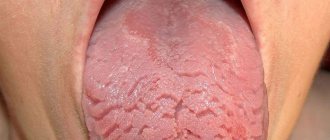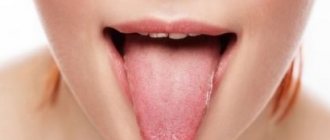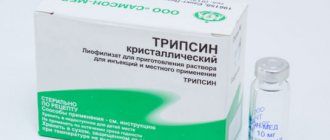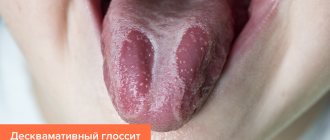Gastritis is one of the most common diseases among all pathologies of the digestive system. This disease is observed in 80-90% of the population. Its main danger is the transition to peptic ulcer disease and the possibility of malignancy.
Gastritis is a specific disease of inflammatory-dystrophic origin of the stomach, in which structural changes occur in its mucous membrane, leading to dystrophy, atrophy or dysregeneration. In the process of these changes, the secretion functions of digestive enzymes (hydrochloric acid and pepsin), synthesis and motility processes of gastrointestinal hormones are disrupted.
Epidemiology
According to statistics, gastritis is registered in 80-90% of adults. Helicobacter pylori associated is recognized as the most common; it accounts for 90% of all diagnoses of chronic hepatitis. The most dangerous form with a high percentage of malignancy is atrophic, occurring in 5% of cases in people under 30 years of age, in 35% in patients 30-50 years of age, in 70% in patients over 50 years of age.
In children, the disease most often develops during puberty and at the age of 4-7 years, when the child is most susceptible to infectious and viral diseases.
Etiology
The development of gastritis is caused by the influence of many factors on gastric tissue. Among the reasons, exogenous and endogenous factors are distinguished.
Exogenous factors include:
- eating disorders;
- bacterial colonization by Helicobacter pylori, less commonly by other bacteria or fungi;
- radiation exposure, chemical damage;
- long-term use of medications that irritate the mucous membrane (the most aggressive are glucocorticosteroids, anti-inflammatory drugs, acetylsalicylic acid, etc.);
- parasitic infestations;
- bad habits (especially alcohol and smoking);
- chronic stress.
Among the endogenous factors are:
- genetic predisposition;
- autoimmune processes;
- duodenogastric reflux;
- metabolic disorders;
- endogenous intoxications;
- endocrine dysfunctions;
- hypoxemia;
- avitaminosis;
- chronic infectious diseases;
Also, the development of gastritis is promoted by various reflex effects from other affected organs.
Pathogenesis
The mechanism of pathogenesis is based on characteristic inflammation of the mucous membrane, which leads to its structural restructuring. If predisposing factors and the active influence of causes are present, the process of inflammation begins, which is characterized by a long course.
Chronitization is based on round cell inflammatory infiltration by neutrophils and other cells of the autoimmune system of the mucosa. Under the influence of the inflammatory reaction, the links in the restructuring of the shell structure and the development of active dysregenerative processes in it are triggered with a further transition to dystrophy and atrophy. The result of these processes is a quantitative change in hydrochloric acid.
The leading role is occupied by associated Helicobacter pylori, the second most common is drug-induced gastritis, and then atrophic.
Signs, symptoms and treatment of gastritis
Gastritis is an inflammatory process in the gastric mucosa. This disease provokes a violation of the absorption of food and digestion. This is the most common disease among others in the digestive system. Most often, gastritis occurs in elderly and middle-aged individuals. It comes in acute and chronic forms. Acute appears when the disease progresses for the first time, and chronic is present on an ongoing basis in the patient’s life. If acute gastritis is not treated in time, it will gradually turn into chronic.
Symptoms of the disease
Clinical symptoms can be divided into pain, dyspeptic disorders, and general symptoms of malaise.
Pain syndrome
Quite often it is the leading link in the clinical picture of the disease, since it is with this that patients seek help.
As a rule, pain is localized in the epigastrium, in other parts of the abdomen much less often. With gastritis with high acidity, a typical pain syndrome develops 1-2 hours after eating, the pain is acute and cutting in nature.
Dyspeptic manifestations
This syndrome is characterized by a violation of the digestion process, which is manifested by the following symptoms:
- decreased appetite;
- discomfort after eating;
- heartburn (may worsen when changing position);
- nausea;
- belching, flatulence;
- gagging - sometimes vomiting;
- sour or metallic taste.
With gastritis with high acidity, the symptoms are most often mildly expressed and become more active in combination with provoking factors (significant pauses between meals, severe stress, overeating, violation of the temperature regime of food, etc.).
General symptoms of illness
As a rule, with uncomplicated forms of pathology, the general condition changes to an insignificant extent. As the inflammatory process increases, changes can be quite pronounced. The most commonly observed symptoms are:
- severe general weakness;
- hypotension, dizziness;
- irritability;
- increased sweating;
- intolerance to certain foods;
- reduction in body weight by more than 5% of total weight within six months;
- hypovitaminosis.
Patients with Helicobacter pylori with hyperacidity may develop ulcer-like symptoms, which indicate a probable pre-ulcerative condition.
In general, the clinical picture is determined by the specificity of gastric secretion disorders and the degree of motor-evacuation dysfunction. The initial period is characterized by symptom-free symptoms, then, as the inflammatory process progresses, a pain syndrome develops with the addition of dyspepsia.
The appearance of gastritis symptoms
This disease manifests itself with different signs. It all depends on the degree and type of disease. The main features include:
- Decreased or loss of appetite.
- Sudden painful sensations in the abdomen, and a feeling of fullness while eating food.
- Belching, vomiting, or heartburn.
- Unpleasant odor from the mouth, the color of stool changes, and the stomach swells.
- Head pain, rapid heartbeat, high level of salivation.
- Chronic gastritis has symptoms that are more difficult to define (coated tongue, constipation, fatigue, bloating, diarrhea, abdominal noises while eating).
Classification, stages of the disease
In clinical practice in Russia, the working classification based on the developments of S. M. Ryss and the Sydney classification is most often used.
Working classification
According to etiology and pathogenesis:
- Type A
: characterized by autoimmune fundic atrophic processes, including those associated with Addison-Bearman anemia;
- Type B
: specific bacterial antral non-atrophic process associated with Hp;
- Type C
: a chemical form associated with reflux of lysolecithin, duodenogastric reflux, and also due to the use of medications;
- Type AB
: characteristic combined atrophic pangastritis, characterized by the involvement of all parts of the stomach in the process.
In addition, there are alcoholic, drug, radiation, lymphocytic, granulomatous eosinophilic and other forms of the disease.
According to topographer-morphological features
By localization:
- fundal;
- astral;
- pangastritis.
According to morphological criteria:
- surface form;
- interstitial;
- atrophic (mild, moderate or severe);
- with complete or partial intestinal metaplasia (small or large intestine).
According to specific morphological characteristics
According to the severity of inflammation:
- minimum;
- insignificant level;
- moderate;
- expressed.
By degree of activity:
- not active;
- mild;
- average;
- heavy.
According to the severity of coolant contamination:
- not expressed;
- lungs;
- average;
- tall.
According to the features of the clinic:
- with a predominance of pain (type B);
- with a predominance of dyspeptic disorders (type A);
- latent (asymptomatic).
According to functional criteria:
- with preserved secretion;
- with increased;
- with secretory insufficiency.
According to endoscopic criteria:
- erythematous (exudative);
- with flat (sharp) erosions;
- rising erosions (chronic);
- hemorrhagic;
- complicated by reflux gastritis;
- hyperplastic.
Separately, gastritis of unknown origin is distinguished, as well as of mixed origin.
The course of chronic hepatitis is characterized by two stages: relapse (exacerbation) and remission, gradually replacing each other.
specialist
Our doctors will answer any questions you may have
Tumasova Anna Valerievna Gastroenterologist
Stages of the disease
The disease occurs in 4 main stages:
- Hyperemic.
At the initial stage, the mucous membrane acquires a reddish color, and slight swelling appears.
- Hypertrophic.
At this stage, thickening of the mucosa occurs with a parallel decrease in hydrochloric acid. Changes are likely both in tissues and at the cellular level (dysplasia), as well as the accumulation of leukocytes (metaplasia).
- Atrophic.
As a result of a long-term ongoing process of inflammation, the mucous membrane becomes thinner, regenerative capacity decreases, and epithelial cells die off and are subsequently replaced by scar tissue.
- Erosive and/or ulcerative.
Due to thinning of the mucous membrane, focal lesions of varying depths form on the inner surface of the stomach.
With each subsequent exacerbation, these lesions deepen and grow, and the symptoms increase accordingly.
Causes of gastritis
The main causes of gastritis are associated with the activation of aggressive processes in the body, which lead to a change in the acid-base environment in the stomach and the destruction of the protective epithelial layer of the stomach walls, which causes tissue inflammation.
Provoking factors for inflammatory and dystrophic changes in the gastric mucosa are stress, malnutrition, taking non-steroidal drugs (aspirin, analgin, diclofenac, ibuprofen) and the bacterium Helicobacter Pilory. The last factor is the most common cause of such diseases. “Helicobacter pylori” supports the inflammatory process in the stomach. A person can become infected with this bacterium in childhood and throughout his life. It multiplies in the body and gradually colonizes the mucous membrane. This process can take decades. If the bacteria is aggressive, it will eventually cause an inflammatory process.
Possible complications
If the doctor’s recommendations are not followed or therapy is inadequate, gastritis can be complicated by the following pathological conditions:
- digestive disorders in the form of malabsorption and dyspepsia;
- vitamin B deficiency;
- peptic ulcer: most often develops with the erosive form of gastritis;
- gastric bleeding: occurs with ulcers and erosions. Clinical signs will include pallor, weakness, cold and sticky sweat, shortness of breath, tachycardia, the presence of blood in the vomit, black stools. This condition requires immediate hospitalization;
- atrophic gastritis: the glands of the mucous membrane almost completely stop producing secretions, the process of replacement with scar tissue begins, it refers to a prenatal condition, the likelihood of malignancy is extremely high;
- iron deficiency anemia (develops with low production of Castle factor);
- stomach cancer.
During an exacerbation, severe complications can develop within several days, and sometimes even one day.
Treatment
Basic treatment is based on the complete or maximum possible exclusion of “aggression” factors that negatively affect the gastric mucosa. Therapy during an exacerbation period begins with following a gentle diet according to Pevzner (table No. 1 and No. 2).
Diet for gastritis
In case of relapse of the disease, a gentle diet is used, and the preparation option is pureed. The basic principles of therapeutic nutrition include:
- mechanical sparing:
is carried out thanks to the choice of products according to the degree of coarse fiber content, digestion time in the stomach, as well as through the process of thorough culinary processing (steam cooking, stewing, giving food the consistency of puree);
- thermal sparing:
is ensured by the exclusion of excessively hot and cold foods that can injure the mucous membrane. The most optimal temperature for hot dishes should be in the range of +30-40 degrees;
- chemical sparing:
consists of increasing vegetable fats and animal proteins against the background of the physiological norm of vitamins, microelements, and all carbohydrates. This is due to the ability of fats to slow down gastric secretion, and on the part of proteins - inactivation of hydrochloric acid;
- limiting the amount of food taken at one time (the “often, but little” principle):
Meals should be 5-6 times a day, in small portions. The best option would be to match food intake with the process of activating the production of hydrochloric acid.
In addition, foods that have a medium and low level of stimulation of acid production are excluded from the diet: berries, fruits, meat, soft-boiled eggs, white bread crackers, cereals, sweet fruits and vegetables.
During a gentle diet, the range includes:
- pureed vegetable soups (excluding cabbage soup and borscht), milk and cereal or noodle soups;
- unleavened cottage cheese, low-fat and non-spicy varieties of cheese;
- boiled pureed vegetables: Brussels sprouts and cauliflower (white cabbage is prohibited), zucchini, carrots, beets, tomatoes;
- compotes with pureed dried fruits;
- dried wheat bread.
All dishes are cooked strictly by steaming, boiling until soft, grinding and serving warm.
During the period of remission, it is advisable to adhere to the principles of a healthy diet. It is important to exclude spices, spicy foods, smoked meats and marinades, and strong meat broths. You should limit pastry, tea, drinks with a high carbon dioxide content, and chewing gum. It is strictly forbidden to drink alcoholic beverages, coffee, and smoking is also prohibited.
Drug treatment
The use of medications is aimed at reducing the active production of hydrochloric acid, regenerating the mucosa and increasing the protective functions of the mucous-bicarbonate barrier. The main groups of drugs used include:
- proton pump inhibitors: the principle of action is based on reducing the formation of hydrochloric acid, they are not addictive (omeprazole, pantoprazole, esomeprazole, etc.);
- H2-histamine receptor blockers: drugs block the effect of histamine on the parietal and parietal cells, resulting in a decrease in the synthesis of pepsin and hydrochloric acid. There is also an increase in the formation of prostaglandins, which increases the protective properties of the mucosa and stimulates regenerative processes. With prolonged use, addiction occurs;
- cytoprotectors: bismuth preparations, sucralfate, misoprostol are prescribed;
- antibacterial therapy: used in a combination of 2-3 drugs, the goal is eradication of Helicobacter pylori (penicillins, niroimidazole derivatives, macrolides);
- prokinetics: prescribed to reduce the frequency of reflexes (itopride hydrochloride, cerucal, domperidone);
- antispasmodics: the mechanism of action is to relieve spasticity (mebeverine, no-spa, hyoscine butyl bromide);
- replacement therapy: prescribed for the atrophic form and achlorhydria (enzymes and gastric juice drugs).
Other groups of drugs are prescribed for the treatment of concomitant pathologies and complications.
Treatment of the disease
In order to get rid of gastritis, the specialist prescribes:
- antibiotics whose action is aimed at Helicobacter pylori;
- antacids to neutralize hydrochloric acid and for pain relief;
- drugs to block the production of hydrochloric acid and heal the gastric mucosa.
In the case of an autoimmune process, immunosuppressants and corticosteroids can be used. In any case, the patient is recommended to give up bad habits, eat a healthy diet, and avoid stressful situations.
At the first signs of gastritis, do not wait for self-healing, make an appointment with a gastroenterologist. Ignoring the symptoms can lead to gastritis becoming chronic and causing serious consequences. Multidisciplinary medical specialists are always ready to help you.
Our clinic is equipped with the necessary medical equipment for diagnosing diseases, and our center employs experienced specialists. Timely prescribed treatment and a completed course of drug therapy will allow you to forget about the disease forever or significantly increase periods of remission.
Prognosis and prevention
The prognosis is usually favorable. Complications, especially bleeding and malignancy, pose a danger.
To prevent the occurrence and progression of gastritis, it is necessary:
- maintain an optimal diet;
- to refuse from bad habits;
- carry out regular sanitation of the oral cavity;
- promptly identify and treat other pathologies of the digestive system.
Patients with a severe course and atrophic form should be registered at the dispensary with annual endoscopic monitoring, and also undergo anti-relapse treatment in the fall and spring.
Prevention of gastritis
To prevent gastritis, you should adhere to a healthy lifestyle: stop smoking, do not abuse alcohol, avoid stress and engage in any type of physical activity. It is especially important to monitor your diet. It must be complete and balanced. Try to include less junk food in your diet, do not skip meals, make sure that your body fully receives the necessary substances: proteins, fats, carbohydrates, minerals, micro- and macroelements, vitamins.
You can make an appointment with a gastroenterologist at the Naedine Clinic by phone in Kirov: (8332) 32-7777 or through the form on the website







